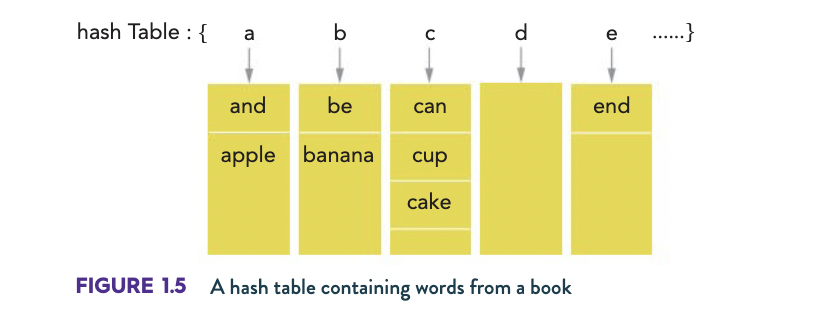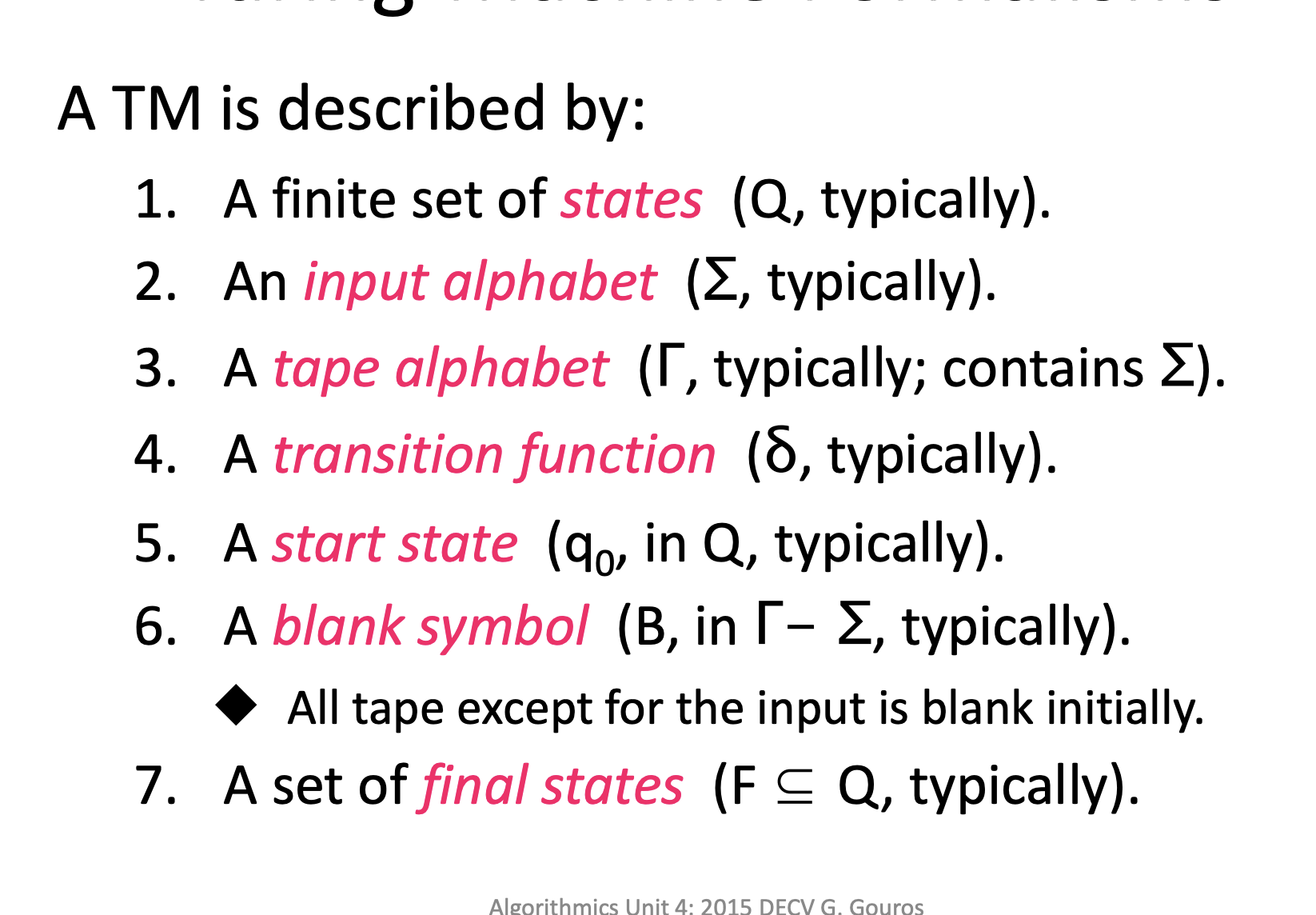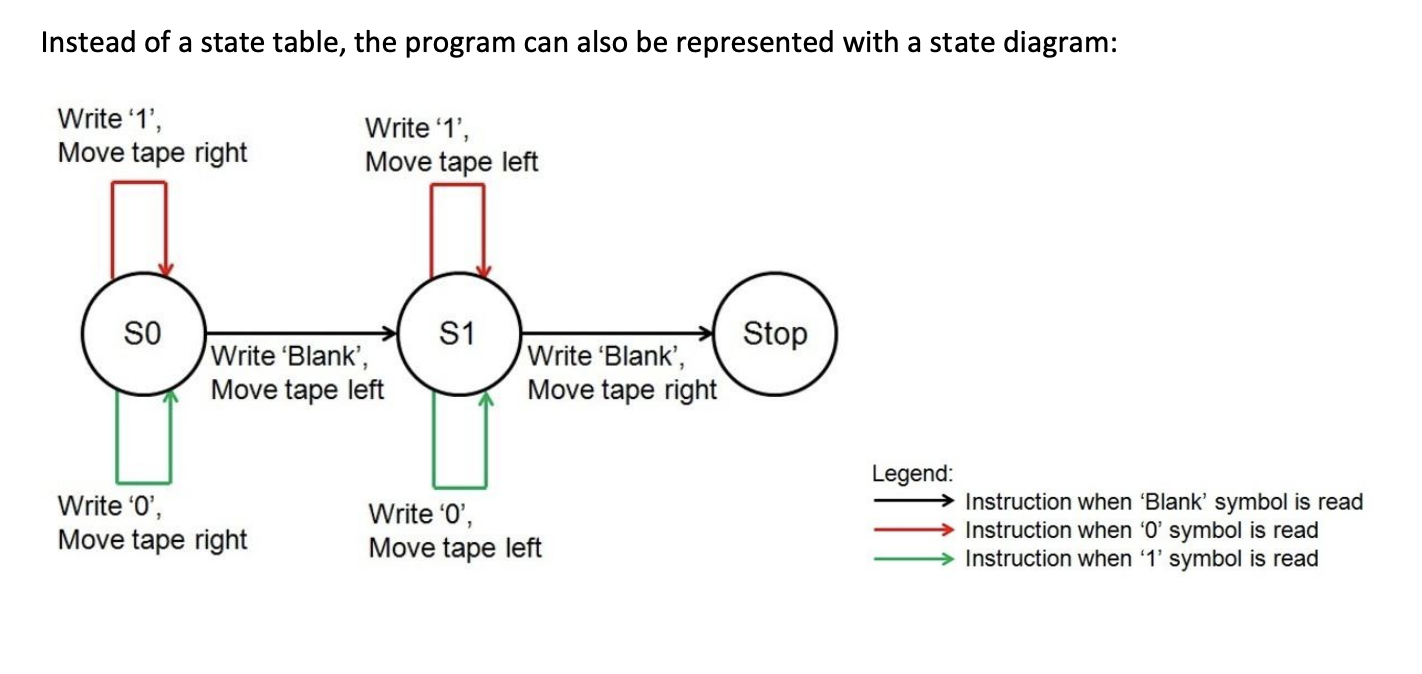Computer Science¶
Note
Some of this content is not applicable to the study design. Consider it extra-curricular or supplimental
Variables¶
Data operators¶
Instructions¶
An instruction is a small unit of code. It is either a:
- Definition of a variables
- Or a statement
Definition¶
Assigning a value to a variable
FOO := 123
Statement¶
A single action
PRINT "abc"
Fundamental operations:¶
| Operation | Symbol |
|---|---|
| Addition | + |
| Subtraction | - |
| Multiplication | * |
| Division | / |
Whole number division (floor(x/y)) |
// |
| Remainder after division (Modulo) | % |
| Powers | ** |
| Assignment | =, $\leftarrow$, := |
Data type comparison operations¶
| Operation | Symbol |
|---|---|
| Less than $<$ | < |
| Less than or equal to $\leqslant$ | <= |
| Greater than $>$ | > |
| Greater than or equal to $\geqslant$ | >= |
| Equal to $\equiv$ | == |
| Not equal to $\neq$ | != |
Modulo¶
Returns the remainder of an operation
Not to be confused with modulus.
"modulo" is an operator. For instance, we might say "19 and 64 are congruent modulo 5". "modulus" is a noun. It describes the 5 in "modulo 5".2 Apr 2021
Data types¶
Integers¶
Number of integers for a number assigned with $n$ bits is:
$$2^n-1$$
Unsigned: $0$ to $2^k-1$
Signed: $-2^{k-1}$ to $2^{k-1}-1$
Floating point¶
Computer decimals that contain 2 parts:
- Significand
- Which contains numbers in decimal (positive or negative)
- Exponent
- Determines where to place the decimal point
Character¶
Also known as a char. Chars are individual symbols that are identified via a number. Char schemes include:
- ASCII
- English letters and grammar
- UTF-8
- Thousands of symbols
Boolean¶
True or False, 0 or 1.
Can be represented differently in different languages
Primitive data types¶
VSV 3.3 Abstract Data Types (ADTs)
Primitive Data types you know from Maths: {Integers, Reals, Complex Numbers, Irrational numbers,......}
Primitive Data types from English: {vowels, consonents, words....}
Data structures¶
Also known as Abstract Data Types or ADTs. Excluding the array
Array¶
A list of values
[0,1,2,3,4,5]
["a","b","c"]
List¶
An array that supports multiple types of variables and is able to undergo several operations.
Cons method¶
Rare content
Just noting that I have never seen this used before
The List ADT standardly includes a special method called "cons", short for construct, with the following signature specification:
cons: item × List → List
The behaviour of this operation is the inverse of the first and rest operations above. In other words, for any list l, if we "cons" the head of l with the rest of l, we get l. (Formally, for all non-empty lists l, cons(first(l), rest(l)) = l.)
Associative array¶
Also called a Dictionary. An array of keys and values
associcativeArray[key]
Associative array methods:
.add()orassocicativeArray[key] = xyz.remove()ordel associcativeArray[key].change()orassocicativeArray[key] = xyz
Hash table¶
A Hash Table is an implimentation of an associative array that uses a (key,bucket) layout. Where the bucket (or slot) is accessed via the key using hashes to instantly traverse to the end value. Which is usually preferred over other types of arrays.

Perfect Hash function¶
When the hash table has one hash per item in the array
Set¶
A set is simmilar to a hash table, but there are no values. It's just keys.
Sets have no order and no duplicate items. They are like a pool of keys. They also have a constant lookup time $O(1)$. This means you could have a set of size 3 and size 1 million and checking if an item was in either set would take the same time for both of them. This is useful for things like checking the existance of things in a database.
Queue¶
Queues are a list of values sorted by entry time. A FIFO (first in first out) system. The first value in is first value out. New values are added at then end of the line via (enqueue). Common methods include:
enqueue()- Inserts a value at the end of the queue
dequeue()- Removes and returns the value from the front of the queue
front()- Returns a value from the front of the queue without removing it
size()- Returns the number of elements in the queue
Priority Queue¶
A priority queue is like a queue, only you can specify the priority for an element when you add it, and you can modify the priority of an element that's in the queue.
You may see some sources that use a fibbonacci heap or a binary heap. These are actually just priority queues. The heap is just how the priority queue is stored and operated with on a lower level.
Explanation on heaps
This is not in the study design. This is just if you're interested and want to see a very common use case for trees
Minimum priority queue¶
When the highest priority item is measured by the lowest weight
// [value, weight]
MinPQ = [[abc,1],[def,2]]
Maximum priority queue¶
When the highest priority item is measured by the highest weight
// [value, weight]
MaxPQ = [[abc,2],[def,1]]
Stack¶
A stack is similar to a queue, but new values are added to the front of the stack, and values are taken from the front as well. Which can be explained as washing a stack of dishes top to bottom, but new dishes are placed on the top. Which is a LIFO (last in first out) system.
Methods:
push()- Insert at top of stack
pop()- Remove and return item at top of stack
top()- Returns last inserted item without removing it
empty()- Returns a bool on weather or not the stack is empty
size()- Returns number of items in stack
Linked list¶
A linked list is an ordered set of elements where the next element in included as a pointer.
A Doubly linked list has pointers for back and fourth down the link chain
The advantage of a linked list is to add data into a large list. If i added an element at the start of the link, i would only need to add the link at the end of the array with its pointer going to the second element in the list. Rather than reindexing the entire array.
Common methods:
head()- Returns the first element in the linked list
tail()- Returns the last element in the linked list
next()- Returns the next element in the linked list based in the selected element
previous()- Returns the previous element in the linked list based on the selected element
Records¶
Also known as: - Structs - Fields
Records are like objects that have fixed variables/values. For example, a record may be called customer and only contain information such as name and number.
Class¶
A class is the outline for an object; containing parameters, variables and methods for each object.
Object¶
An instance of a method.
Method¶
A function in a class to be run on the object (self)
Event¶
An event is a special type of method this is "triggered" based on if an object's state changes. It is designed to react to changes within an object.
Type signature¶
Also known as a signature specification. Definition
Example:
all_the_edges: Graph → set(edge)
and
true: ⟶ BOOL
false: ⟶ BOOL
NOT: BOOL ⟶ BOOL
AND: BOOL × BOOL ⟶ BOOL
OR: BOOL × BOOL ⟶ BOOL
A signature consists of the name of a data operator, the types(s) of its input(s) and the type of its output
In the form:
function name: input1type x input2type ⟶ output1type
Programming¶
Programming levels¶

Low level programming languages¶
A low level programming language has little to no abstraction from machine code
E.g: - Assembly - Binary (literally)
High level programming languages¶
A high level programming language a lot of abstraction from machine code.
E.g: - Edgy - Python - C++ - A lower, high-level language
Boolean Algebra¶
Operator symbols:
| Operator | Symbol | Working |
|---|---|---|
| AND | $\land$ | Needs both inputs to be 1 |
| OR | $\lor$ | Needs one input to be 1 |
| NOT | $\lnot$ or $\sim$ | Swaps 0,1 |
OR¶
One input must be true, to return true.

AND¶
Both inputs must be true, to return true.

NOT¶
Input is swapped. True goes to false, and false to true.

Operations¶
Primitive operations¶
Primitive operations are basic computations performed by an algorithm.
Examples: - evaluating an expression - Assigning a value to a variable - Indexing into an array - Calling a method - Returning from a method
Turing machine¶

- The Turing machine can either: edit erase or read the infinite tape
- Each cell can contain one symbol from the finite alphabet of machine symbols
- The machine follows programs, stored in the head of the reader
-
Read data Write instruction Move instruction blank none none 10right once 01right once

Info
Deterministic Turing machine¶
A Turing machine that follows fixed rules. A natural or realistic Turing machine
Nondeterministic Turing machine¶
Can solve NP problems?
A theoretical Turing machine whose governing rules specify more than one possible action when in some given situations. That is, an NTM's next state is not completely determined by its action and the current symbol it sees, unlike a Deterministic Turing machine
Universal Turing Machine¶
A Turing machine that can simulate any other Turing machine with any finite input. Usually where the program code and input is stored on the tape.
State table¶
You can set functions (states) that contain different sets of instructions
| State | Read data | Write instruction | Move instruction | Next state |
|---|---|---|---|---|
| State 0 | blank | none | none | Stop state |
0 |
1 |
right once | State 0 | |
1 |
0 |
right once | State 0 |
- A stop state terminates the program
- This table reverses all bits
Finite state machines¶
| State | Read data | Write instruction | Move instruction | Next state |
|---|---|---|---|---|
| State 0 | blank | blank |
left once | State 1 |
0 |
1 |
right once | State 1 | |
1 |
0 |
right once | State 0 | |
| State 1 | blank | blank |
right once | Stop state |
0 |
1 |
left once | State 1 | |
1 |
0 |
left once | State 1 |
- For the write instruction,
nonehas been changed toblankfor uniformity's sake (so that only the machine's symbols are referred to), and it should be noted that they are equivalent.
State diagram¶

Formal definition¶
$$ δ(q, 0) = (q, 0, R) $$
q is the state, 0 (left) is read, 0 (right) is right, R is move right command
$$ δ(q, 1) = (f, 0, R) $$ $$ δ(q, B) = (q, 1, L) $$